News
Killing the Kelani River
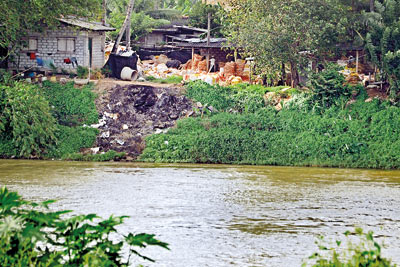
Kelani River: Slowly dying. Pix by Ranjith Perera
The Kelani River has silently endured contamination, soil erosion and illegal sandmining over the past years, turning from a clear, sparkling river into a heavily-browned and polluted body of water.
Now, attention is being focused on the ruination of the Kelani and its status as the source of drinking water to a greater part of Colombo, with the Central Environment Authority (CEA) checking the compliance of 80 high-polluting industries bordering the river from Avissawela to the Ambatale Water Treatment Plant following the diesel leak from a pipe at Coca Cola Beverages Sri Lanka Limited.
CEA Deputy Director-General Dr. Sanjaya Ratnayake yesterday said he hopes to conclude the checks on high-polluting industries along the Kelani by September 22 and then commence checking low and medium-polluting industries, which number about 500.
Residents along the Kelani are angered by the pollution of the river.
The village of Raggahawatte is polluted from the industrial waste released from the Biyagama Industrial Zone. Fifty-one-year-old A.A. Chandrasiri remembers what the area was like before it became part of the industrial zone.
“This river was crystal-clear. In the mornings we could see fish swimming in it,” Mr. Chandrasiri said, pointing at the now dark-brown Kelani River.
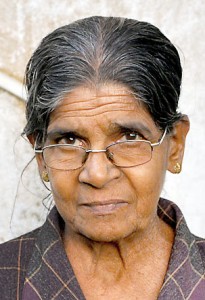
Chandra Egodawatte
Mr. Chandrasiri, who has lived by the river from birth, remembers how he would come home from school and run straight to the river for a swim with his friends. But now the river is, slowly dying, he said. Bags of garbage and carcasses of animals float in it, making it impossible to swim in it any more.
He has witnessed how the river was polluted over the years. “Almost every night, industries upriver discharge their waste into the river.Sometimes the river becomes dark red with this effluent,” he said
Mr. Chandrasiri’s daughter, 43-year-old Tharanga Piyangani, said her two children tried a dip in the river but complained later of skin irritation and rashes. Now, the river is off-limits to her children.
Chandra Egodawatte, 71, who has lived in Pahala Biyagama for more than 40 years, said that as a result of a beer factory coming up close by, her family’s wells dried up, forcing the family to sign up with the National Water Supply and Drainage Board (NWSD) for their water supply.
“Even that water is not drinkable. We only use NWSD water for washing. Look here,” she requested, holding up a cup of discoloured water.
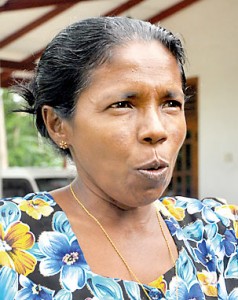
Vijitha Padmashanthi
Eighteen-year-old Surinda Madampe, who is to do his Advanced Level Examination next year, showed a pipe through which the beer factory releases effluents into the river.
He said that sometimes the liquid released is red and smells. The residents had contacted the CEA about it several times, he said.
Social worker 53-year-old Vijitha Padmashanthi, who lives down Biyagama Road in Mabima, revealed that hotels set up by the river were breaking environment laws. She said every night and early morning bags of waste were thrown from these hotels into the river.
“They do this because it is easier than burning or burying it. Sometimes we find dead dogs and carcasses of other animals too,” she said, adding that CEA officials who visited their area on Environment Day, June 5, had been informed about this but nothing had been done.
“Something like the Coca Cola case had to happen for them to start doing something,” she said dismissively.
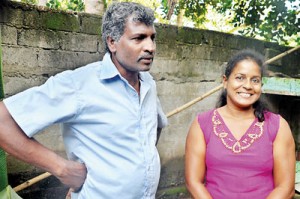
A.A. Chandrasiri and daughter Tharanga Piyangani
The Director of the Environment Conservation Trust, Sajeewa Chamikara, alleged that the CEA and local government bodies were not doing their job in protecting the river. Several studies had been conducted on the Kelani River over the years.
“These reports clearly show that organic chemicals, acids and other chemicals from hundreds of factories and small industries are released into the river daily.
A report by the Peradeniya University also reveals that the river has toxic substances such as magnesium, lead and mercury mixed in it,” Mr. Chamikara said. He said factory effluents were discharged into the Kelani mostly at night or during the rainy season and the authorities had been informed of it.
Mr. Chamikara said government authorities had to ensure responsible service to the public before the river became further polluted.
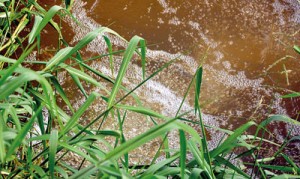
The murkey waters
A report released on Monday by a conservationist group, the Environmental Foundation Ltd (EFL), called on the CEA to monitor industries regularly for adherence to officially-prescribed environmental standards.
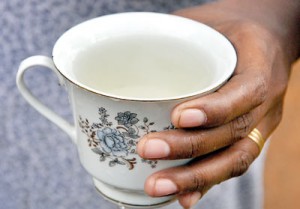
The water is no longer drinkable
Qualified, independent third parties should be engaged in the monitoring process to ease the CEA’s burden and to encourage an inclusive participation of other bodies as well as transparency, the EPL said in the report, “Industrial Responsibilities towards the Environment”.
It also called for “laboratory facilities nationwide to be enhanced to analyse critical parameters that can pollute potable water”.
| Test found furnace oil in water The results of the water samples sent to India to be tested following the August 17 water contamination issue shows that the water was mixed with furnace oil, National Water Supply and Drainage Board Chairman Kuddoos Alahudeen Ansar said. |

